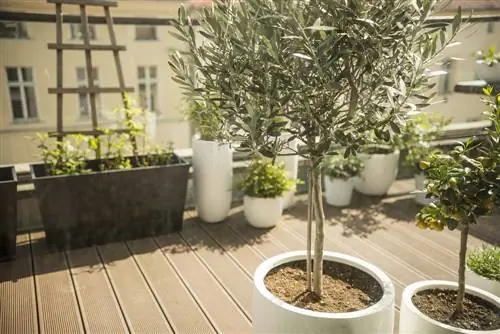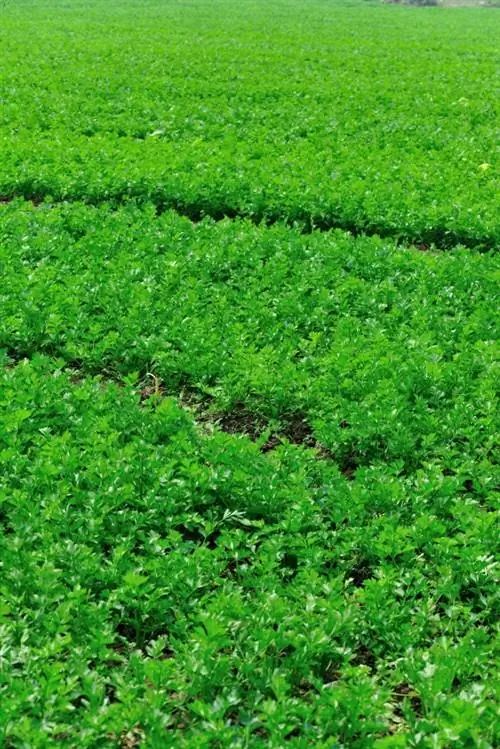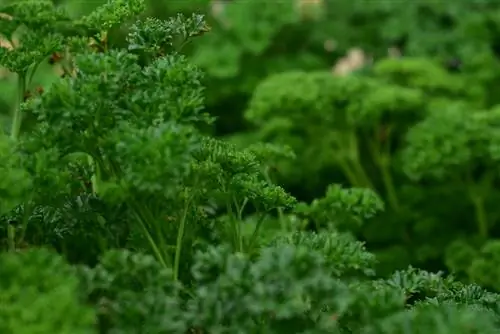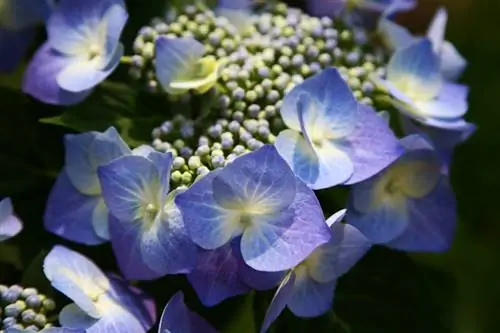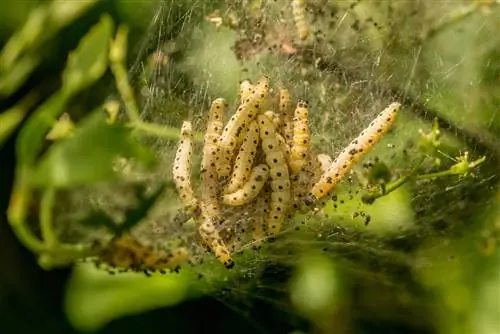- Author admin [email protected].
- Public 2023-12-16 16:46.
- Last modified 2025-01-23 11:21.
Trees thrive not only in the forest or in the garden, but also in a pot or other planter. All you need is the right location and very careful care.
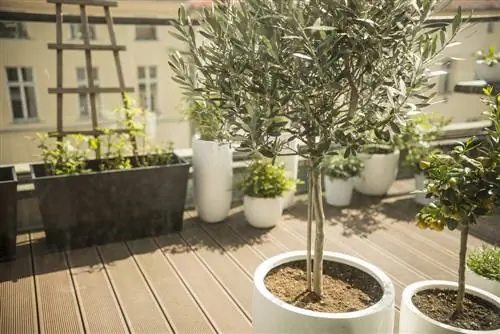
How do I care for a tree in a pot?
To successfully cultivate a tree in a pot, you should choose a suitable tree species, use a suitable planter and pay careful attention to watering, fertilizing and overwintering. When selecting the species, columnar trees, dwarf varieties or small-growing species are particularly recommended.
Selecting the tree species
Basically, every tree can be cultivated in a pot, as has been done with bonsai in Japan for thousands of years. However, some species are much easier to keep in confined spaces than others, which is not only due to their natural needs but also to their growth behavior. Particularly vigorous species are not always compatible with cutting, so keeping them artificially small is difficult. If you don't want to or can't invest too much care and effort into your potted tree, it's best to choose a species that was specifically bred for planters. These include
- Columnar trees, such as columnar fruit, columnar thuja, etc.
- Dwarf varieties of common species, for example the dwarf ash (Fraxinus excelsior 'Abiona')
- Naturally rather short-growing species and varieties, for example the boxwood (Buxus)
- or noble varieties grafted onto weak-growing rootstocks, often found in fruit trees
The following are well suited for pot culture:
- Common yew (Taxus baccata), hardy
- Dwarf pine (Pinus mugo), hardy
- Juniper (Juniperus communis), hardy
- Star magnolia (Magnolia stellata), not hardy
- Purple magnolia (Magnolia liliiflora), not hardy
- Japanese cake tree (Cercidiphyllum japonicum), hardy
- Japanese Japanese maple (Acer palmatum), hardy
- various citrus trees (Citrus), not hardy
- Olive tree (Olea europaea), not hardy
- Pomegranate (Punica granatum), not hardy
- Fig tree (Ficus carica), not hardy
- Willow (Salix), hardy
- Pagoda dogwood (Cornus controversa), hardy
Taproot-forming tree species such as oak, pine and fir are very difficult to care for in a planter.
Choosing the planter
For a future potted tree, if possible, you should not purchase bare-root products, but rather young trees that have already been grown in containers. These are already used to pot culture and have not been dug up from the outdoors and repotted into a planter. A planter is ideally sized if it offers about twice as much space as the size of the root ball. It shouldn't be bigger either, otherwise the tree will put a lot of energy into root growth. If possible, choose a pot made of natural materials, such as clay or ceramic, as water accumulates very quickly in plastic pots.
Care
Proper care keeps the tree he althy in the pot, but depends on the specific needs of the species and variety chosen. However, some general statements can be made.
Watering and fertilizing
Planted trees forgive one or two care mistakes - potted trees do not. These depend on your care for better or for worse, and particular attention should be paid to the supply of water and nutrients. Make sure that
- no waterlogging occurs, v. a. through good drainage
- the root ball does not dry out
- no nutrient deficiency occurs
- but no oversupply either
Overfertilization can be prevented by using slow-release fertilizers (€59.00 on Amazon).
Wintering
Hardy trees can be left outside during the winter months, you just should keep them
- place on an insulating surface made of wood or Styrofoam
- wrap the pot with fleece or foil
- and move the pot and tree against a house wall
Non-hardy trees should overwinter frost-free but cool at a maximum of 10 °C. Running species can also be placed in dark rooms, evergreens need sufficient light even in winter.
Tip
Potted trees should be repotted into fresh substrate every two years, although the planter does not necessarily need to be replaced.

